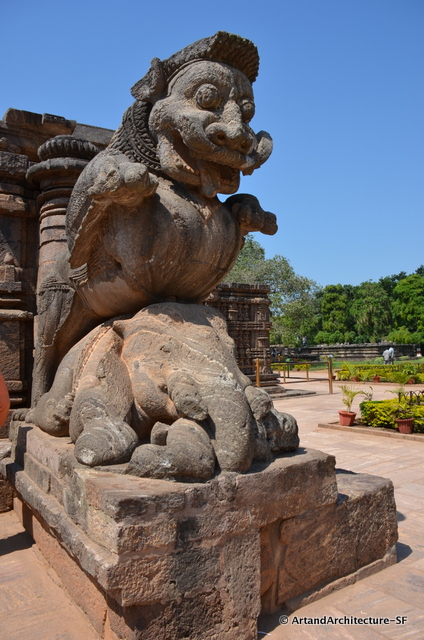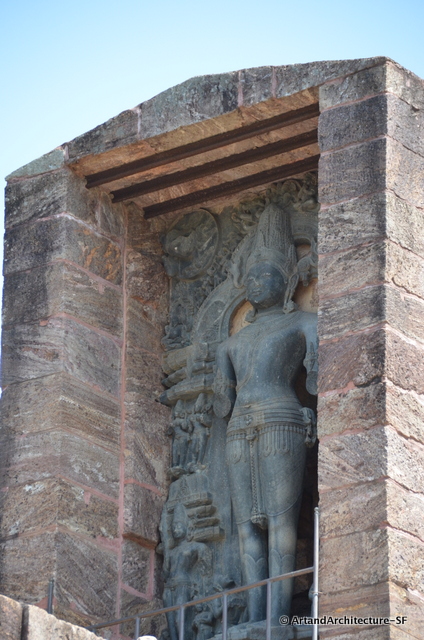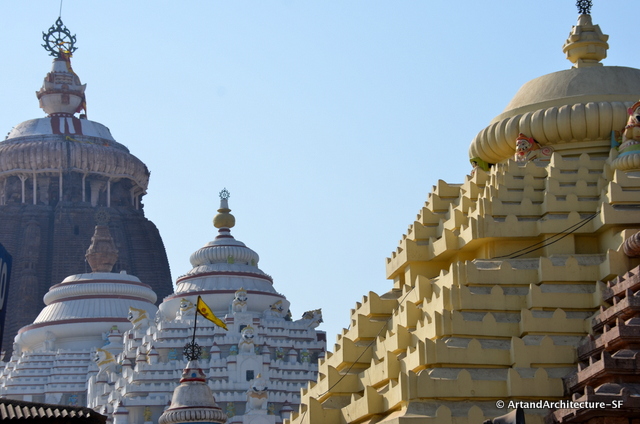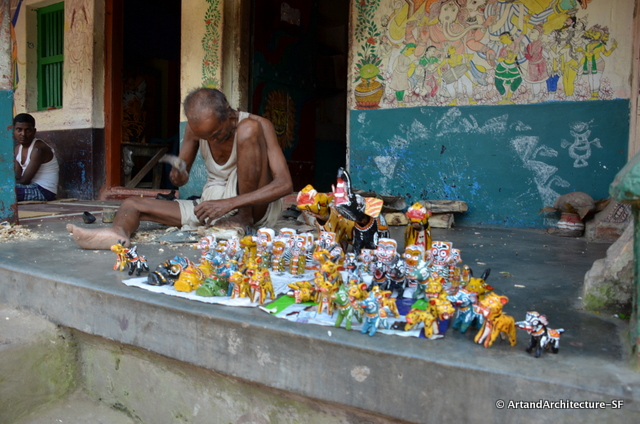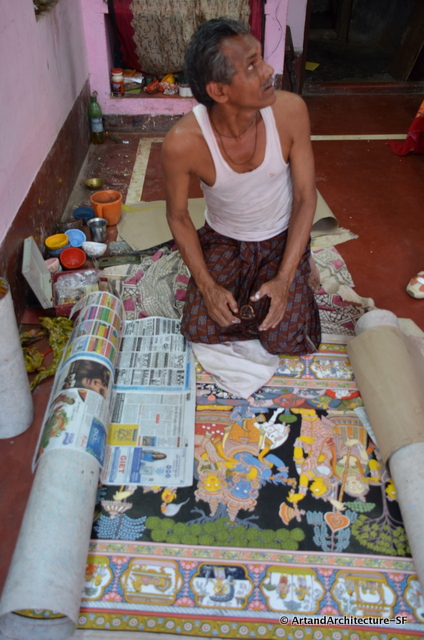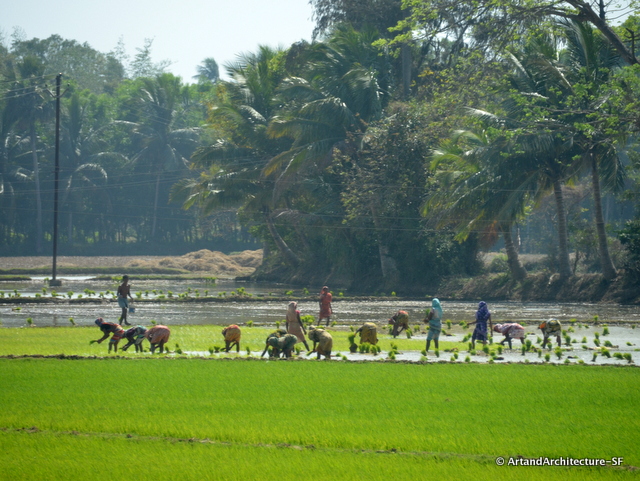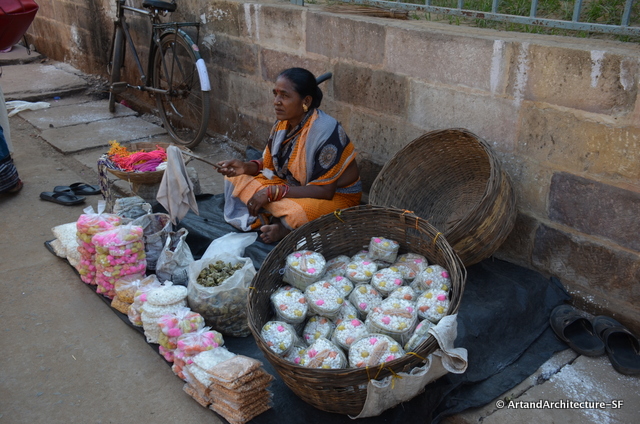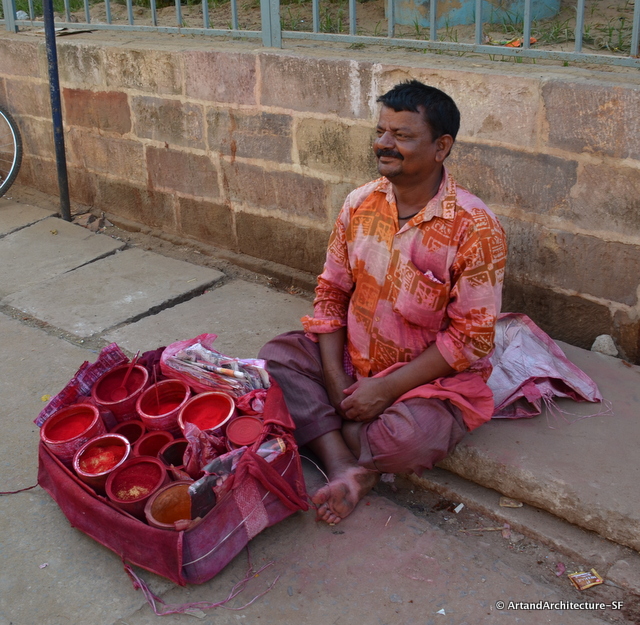February 2015
Our last day in Bhubaneswar, was very long, and yet amazing, sadly, tomorrow we fly to Delhi and home.
It began with a short stop at a Rock Edict of Ashoka (Asoka). Ashoka was first introduced to us at Sarnath.
 Discovered in 1837, this set of Rock Edicts contains eleven out of the well-known fourteen Rock Edicts of Ashoka. (BC 273-236). The omission of the thirteenth edict is deliberate as it describes Ashoka’s conquest of Kalinga through a horribly bloody war. Kalinga was the turning point of Ashoka’s career and what converted him to Buddhism. In place of the eleventh, twelfth and thirteenth rock edicts, two special edicts know as Separate Rock Edicts or Kalinga Edicts have been incorporated here, which are conciliatory in nature and meant to pacify the newly conquered people of Kalinga.
Discovered in 1837, this set of Rock Edicts contains eleven out of the well-known fourteen Rock Edicts of Ashoka. (BC 273-236). The omission of the thirteenth edict is deliberate as it describes Ashoka’s conquest of Kalinga through a horribly bloody war. Kalinga was the turning point of Ashoka’s career and what converted him to Buddhism. In place of the eleventh, twelfth and thirteenth rock edicts, two special edicts know as Separate Rock Edicts or Kalinga Edicts have been incorporated here, which are conciliatory in nature and meant to pacify the newly conquered people of Kalinga.

On the rock above the inscription is the sculpted forepart of an elephant carved out of rock which symbolizes Buddha, the “best of elephants”. This is believed to be the first sculpture of India.
Some of the Edicts that do a good job of summing up Ashoka’s rule are: Prohibition of killing of animals. Making arrangements for both human and animal beings to receive medicinal treatments. The order that officials must set out on tour every five years to propagate moral codes. They ordered Ashoka’s officers to report to him on matters of administration related to the affairs of his people at all times and at all places. They proclaimed that morality is the only act of fame and glory.
I spoke with an Indian gentleman from Kerala, and he was just in awe of Ashoka and his humanity, all our countries need the return of a man as great as Ashoka.
 Our first temple stop was Konark, the site of the 13th century Sun Temple. The name Konark comes from the Sanskrit words Kona (angle) and Arka (sun).
Our first temple stop was Konark, the site of the 13th century Sun Temple. The name Konark comes from the Sanskrit words Kona (angle) and Arka (sun).
When you enter the grounds the first thing you encounter is the Nirtya mandapa (dancing hall) a big pillared hall built on a very high plinth, in front of the Jagamohana (gathering hall) which was intended for offering arati-nrityas (dances) by the devadashis (dancing girls) during the worship. We saw this type of dancing hall at the Lingaraj Temple, it is where traditional dance began in India and was a revered art form.
The roof has disappeared but the pillars and walls are elaborately carved with dancing figures in various poses, playing instruments and carrying incense burners and lamps.

The temple has only one named person in the entire place, and that is not of the king that built the place, but of the dance instructor.
The temple, built in the middle of 13th century, is a massive co-ordination of engineering and artistry. It is said that King Narasimhadeva I had this temple built, with the help of 1,200 artisans within a period of 12 years (1243-1255 A.D.). The temple was considered as a chariot for the Sun God and is designed in the form of a gorgeously decorated chariot mounted on 24 wheels, each about 10 feet in diameter, and drawn by seven horses. The poet Rabindranath Tagore wrote of Konark: “here the language of stone surpasses the language of man.”
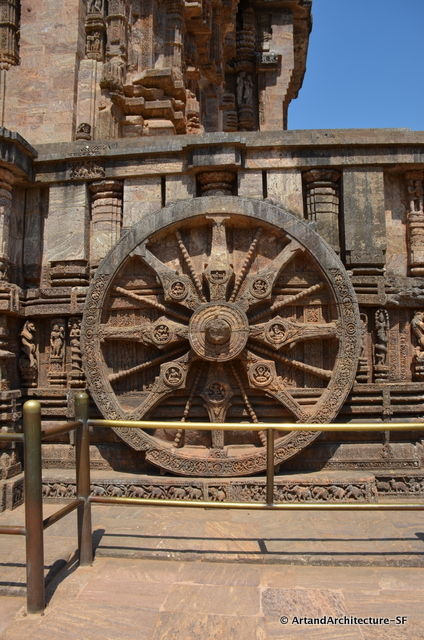
The wheels represent the months of the year and also work as sundials. They do this by dividing the day into three-hour sections.
The large structure of Konark Temple seen today is actually the entrance of the main temple. The main temple which enshrined the presiding deity has collapsed, no one is quite sure how, but even in its ruined state it is magnificent.
There are three images of the Sun God at three different sides of the temple, positioned in proper direction to catch the rays of the sun at morning, noon and evening.
After a drive along the Bay of Bengal we stopped at the town of Puri. Puri is one of Indias most important pilgrimage towns and the center of this is the Jagannath Temple. The temple was built in the 12th century by King Anantavarman. it is surrounded by a 20 foot high wall, but this time we could not climb up to peer in as the tower was under repair.
We had the chance to visit the town of Pipli. This small town is filled with artisans, some good and some not so good.

